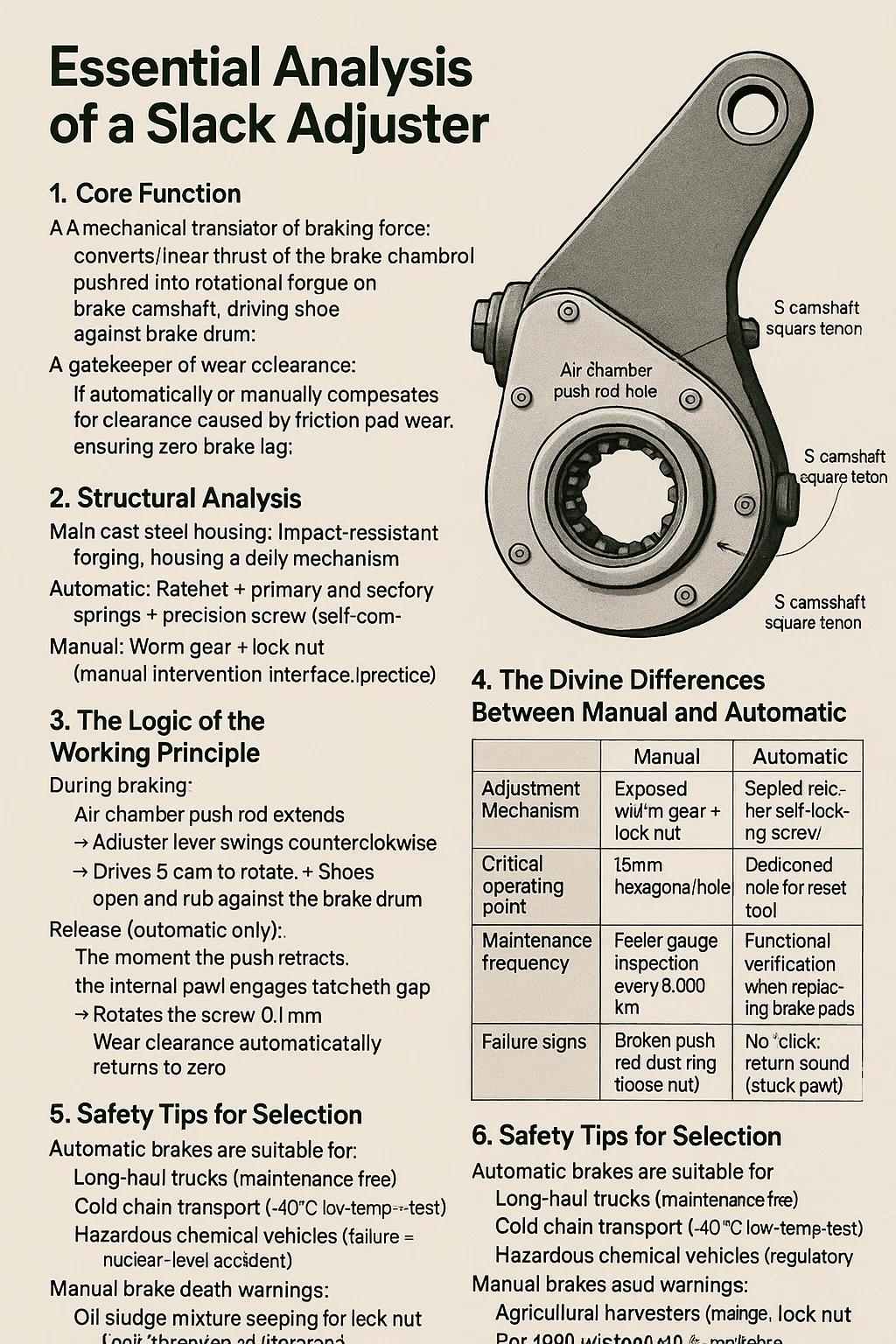 (+86)-137 5851 1881
(+86)-137 5851 1881

Essential Analysis of a Slack Adjuster
Content
A mechanical translator of braking force: It converts the linear thrust of the brake chamber pushrod into rotational torque on the brake camshaft, driving the shoe against the brake drum.
A gatekeeper of wear clearance: It automatically or manually compensates for clearance caused by friction pad wear, ensuring zero brake lag.
Main cast steel housing: Impact-resistant forging, housing a deadly mechanism.
Automatic: Ratchet + primary and secondary springs + precision screw (self-compensating core)
Manual: Worm gear + lock nut (manual intervention interface)
Critical points:
Air chamber push rod hole (withstands 30kN impact force)
S camshaft square tenon (torque transmission joint)
During braking:
Air chamber push rod extends → Adjuster lever swings counterclockwise → Drives S cam to rotate → Shoes open and rub against the brake drum
Release (automatic only):
The moment the push rod retracts, the internal pawl engages the ratchet tooth gap → Rotates the screw 0.1mm → The wear clearance automatically returns to zero
| Feature | Manual Slack Adjuster | Automatic Slack Adjuster |
|---|---|---|
| Adjustment Mechanism | Exposed worm gear + lock nut | Sealed ratchet + self-locking screw |
| Critical Intervention Point | 15mm hex socket Overtightening → Brake drag → Tire fire | Dedicated reset tool port Forced adjustment → Compensation logic failure |
| Maintenance Frequency | Measure clearance every 8,000km(Feeler gauge mandatory) | Function test during pad replacement(Listen for engagement click) |
| Failure Signature | Fractured dust ring on pushrod(Lock nut loosening) | Absence of "click" post-braking(Pawl jamming confirmed) |
Automatic brake failure warnings:
Push rod return 0.5 seconds late after brake release (main spring fatigue); Sudden increase in backlash during reverse braking (secondary spring lock failure); Manual brake death warnings:
Oil-sludge mixture seeping from lock nut (prelude to thread stripping); Adjustment worm slipping (worm gear teeth shaved).
Automatic brakes are suitable for:
Long-haul trucks (maintenance-free); Cold chain transport (-40°C low-temperature test); Hazardous chemical vehicles (failure = nuclear-level accident); Manual brake failure warnings:
Agricultural harvesters (low-speed, short-distance); Pre-1990 vintage vehicles (regulatory exemptions)
